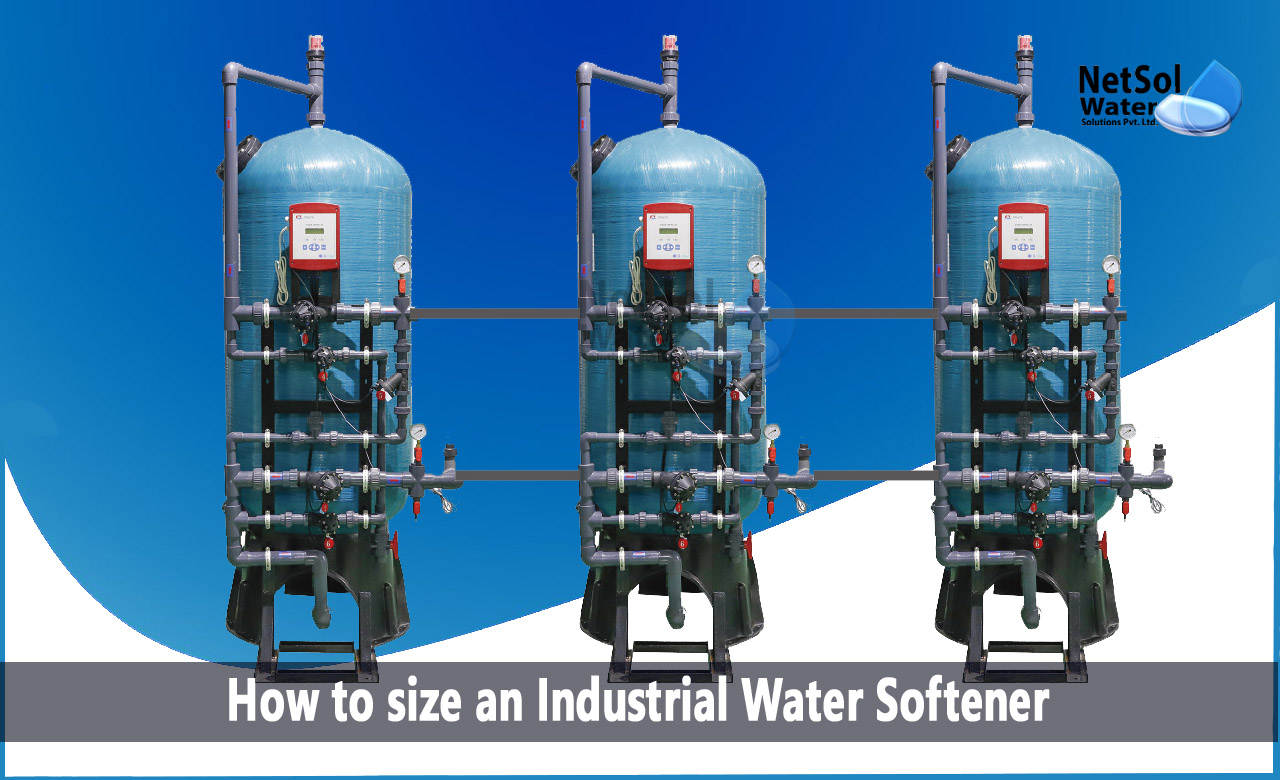Prior to boiler, cooling, and reverse osmosis systems, water softeners are ion exchange systems created to remove the calcium and magnesium ions that cause scale to form. It is possible to choose from a wide variety of softener sizes and configurations, with selection based on elements such as water quality, system demand, and overall application.
In industrial applications, it's crucial to choose a water softener that's the right size to prevent hardness, from getting to crucial system parts. Due to the hard water in these systems, both over and under-sized softeners can cause significant issues.
Let’s understand the concept of sizing an industrial water softener.
How to size an Industrial Water Softener?
To prevent issues with hard water, softeners need to be properly sized. There are some considerations to make when sizing a water softener:
1- Water that needs to be softened overall
2- Water capacity for softening (hardness removal) via softener resin exchange
3- Maximum water flow rate after softening
It is often simple to determine the resin exchange capacity and raw water hardness. To begin with, you must comprehend how much the entire hardness of the water that needs to be softened differs. The salt dosage during regeneration will then influence the resin exchange capacity. Therefore, determining the maximum flow rate and the amount of water that needs to be softened, especially in industrial applications, is not always easy.
Calculating Water Use
Softeners should generally be designed to renew once every 1-3 days, and occasionally once per 12 hours.
Smaller softener units can be used with more frequent regenerations, which lower capital costs; however, too much regeneration can cause the resin to degrade prematurely, valves to wear out more quickly, the brine solution to become improperly saturated, and the demand to exceed the available capacity.
If regeneration occurs too infrequently, the resin bed may develop flow path short circuits, sometimes referred to as "channelling" that allow hard water to pass through the resin bed.
The amount of soft water used each day must be calculated in order to know, how often the resin has to be regenerated.
Depending on the application, there are many different ways to accomplish this. The need for water may be rather consistent, as in the case of softening water before a RO unit. In this situation, calculating the necessary amount of water only requires averaging the water use over a period of time.
However, seasonality or fluctuations in condensate return may cause the soft water requirement for a steam boiler system, to vary dramatically. The maximum system load and the minimal quantity of anticipated condensate return should be taken into account, when determining the amount of soft water needed in this situation.
If the configuration of the complete system is not done carefully, issues with over and under-sizing the softener may arise.
It's possible that the maximum system load and total system capacity are different. Redundancies, such as lead-lag-operated boilers, can cause dramatic oversizing due to surplus capacity when taken into account. When sizing softeners upstream of a reverse osmosis (RO) system, other factors that must be taken into account include whether the softened water is blended for use in tower systems, and the quantity of reject water that must also be taken into account.
Requirements for Flow Rate
The resin bed may become compacted if the flow velocity is too high. Reduced water contact time with the resin due to bed compaction reduces the resin's ability to soften water. Pressure drops grow, which can impact resin beads' flow and outlet pressure as well as cause damage. Insufficient water distribution across the resin may result in channelling if the flow rate is too low. In either scenario, hard water will eventually enter the softening system.
Types of flow rate in a water softener
When sizing a softener, continuous flow rate and peak flow rate are the two types of flow rates that are used. The flow rate that should typically be utilized to size the softener is continuous flow, which is the system's average maximum flow rate. The softener's maximum allowable flow during periods of extreme demand is known as the peak flow rate.
Peak flow should only be attained seldom and for brief intervals, failing which the resin bed's integrity may be jeopardized. Typically, peak flow rates that continue longer than 30 to 1 hour shouldn't be used to size softeners.
A demand flow softening design may also be advised if the flow rate is very erratic. Demand flow configurations operate softener tanks in tandem, and provide larger softening system flow rates during periods of high demand. Available resin tanks are brought online to handle the load when soft water demand rises.
Additionally, tanks that are not in use are turned off when demand declines to stop low-flow channelling, through unnecessary resin tanks. As an alternative to designing a larger softener system, a soft water storage tank with subsequent re-pressurization pumps could be taken into consideration, to accommodate peak demands.
Conclusion
To ensure that critical system components are safeguarded from hardness scaling difficulties, it is necessary to carefully take into account all parameters linked to water softener sizing. A team of engineers is available at Netsol Water Solutions to help you make the best choice, from among a broad array of softeners that are made to satisfy any requirements.
Water softener manufacturer and supplier
Netsol Water develops and produces water softeners that are highly successful, at lowering water hardness. By using a highly acidic cation exchanger to remove calcium and magnesium ions from the water, they aid in the production of soft water.
Our water softener plant is transportable and simple to relocate. Additionally, it requires less work for installation and upkeep. As one of the top manufacturers of water softening plants situated in India, we offer our products to customers at rates that are as low as possible.




